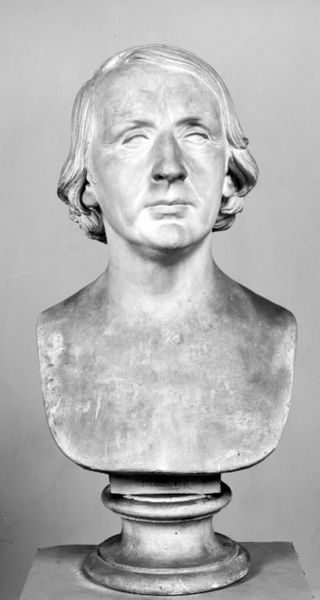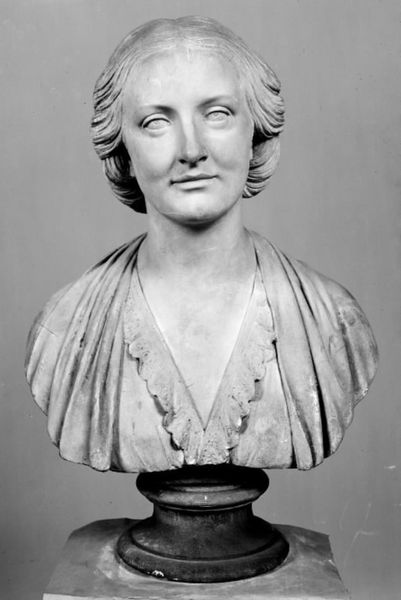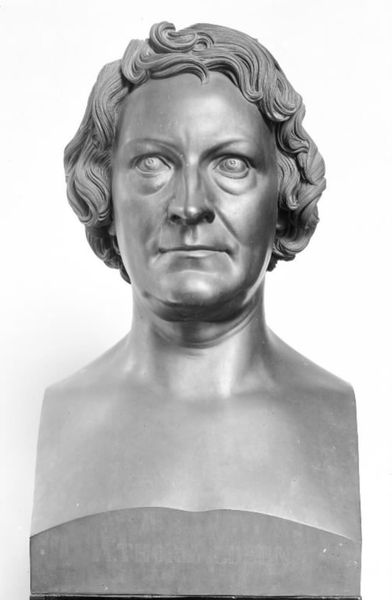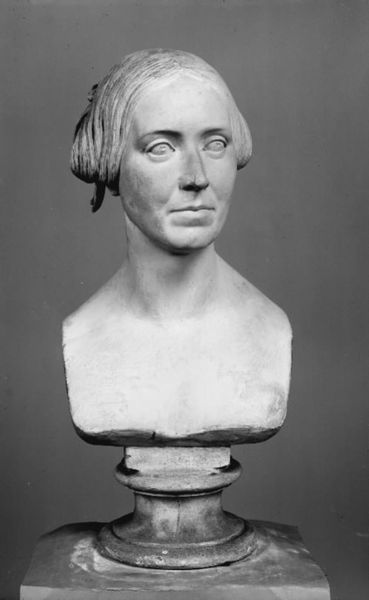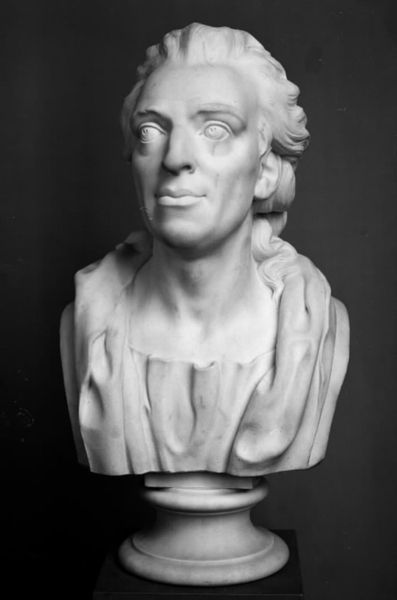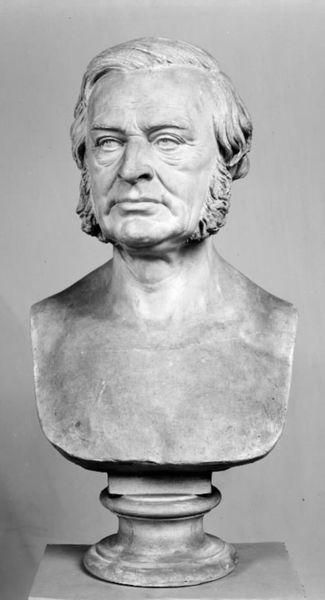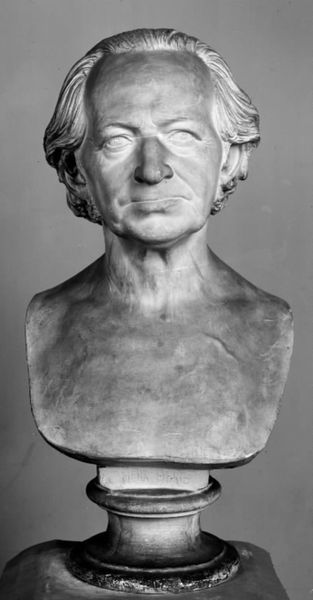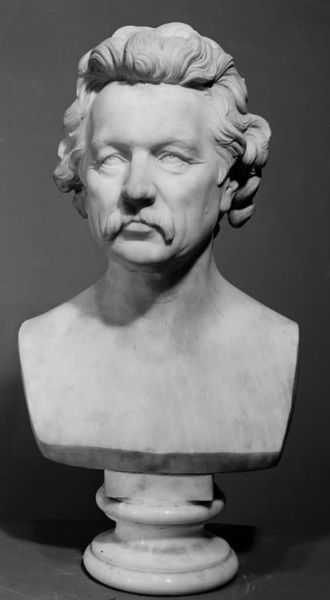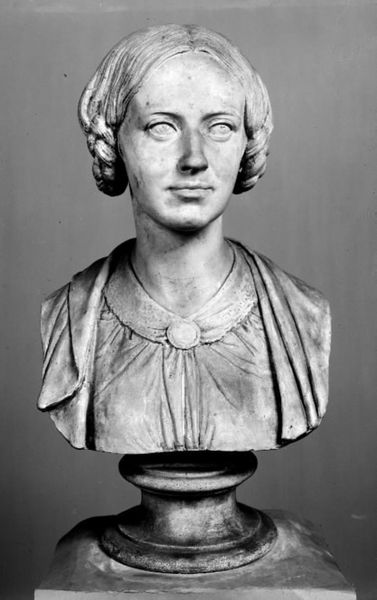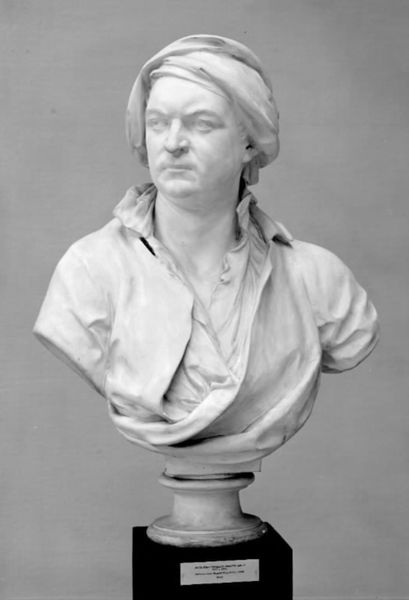
sculpture, marble
#
portrait
#
neoclassicism
#
sculpture
#
frontview face
#
sculpture
#
marble
Dimensions: 67 cm (height) (Netto)
Editor: This is a marble bust of the composer Niels W. Gade, sculpted by H.W. Bissen in 1864. Its style seems to evoke Neoclassicism, but the intense gaze gives the sculpture an emotional depth. What do you see in this piece? Curator: I see a portrait that's embedded in a web of 19th-century social dynamics. Beyond being a visual representation, this sculpture is a power play, reflecting the cultural values ascribed to artistic genius, particularly male genius. How does this monument to Gade, specifically, serve to reinforce dominant narratives around Danish cultural identity at the time? Editor: So, it's not just about commemorating the composer, but also about shaping perceptions of national identity? Curator: Precisely. The clean lines of Neoclassicism emphasize rationality, and this portrayal may attempt to associate those characteristics with Gade, and by extension, Danish culture. Note how the marble—traditionally linked to Greek and Roman sculpture—further elevates the subject by aligning him with the ideals of classical antiquity. The whiteness is relevant as well, invoking conversations of race, and constructions of ‘genius’. Editor: It’s interesting how a sculpture can be interpreted through so many layers. Curator: Indeed. By questioning the historical context, the artist’s choices, and the visual language of the sculpture, we start to unravel power structures in play. Perhaps, what appears as an innocent tribute, becomes a profound social statement. What did you notice, considering gender in particular? Editor: I did not focus on gender. I now realize how, by overlooking the inherent biases, I had unintentionally missed its gendered aspects. Thank you! Curator: No problem, this journey of collective unlearning never stops.
Comments
No comments
Be the first to comment and join the conversation on the ultimate creative platform.
